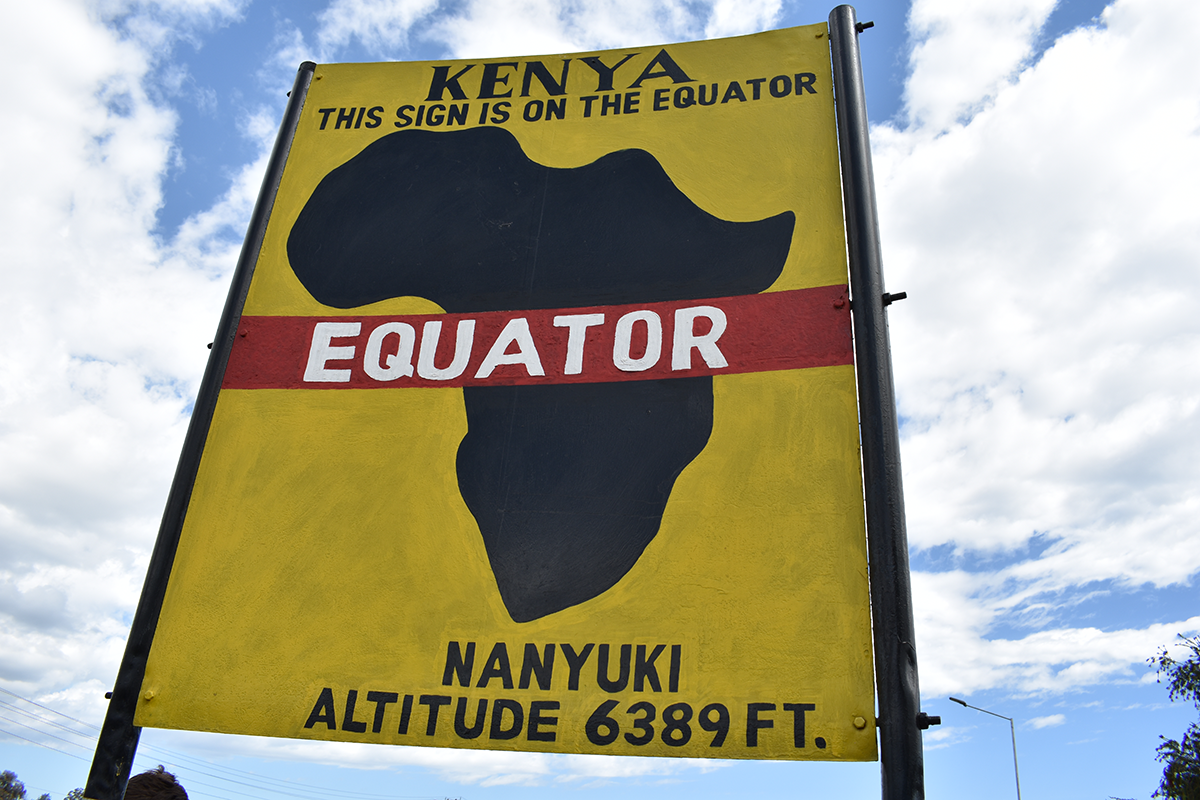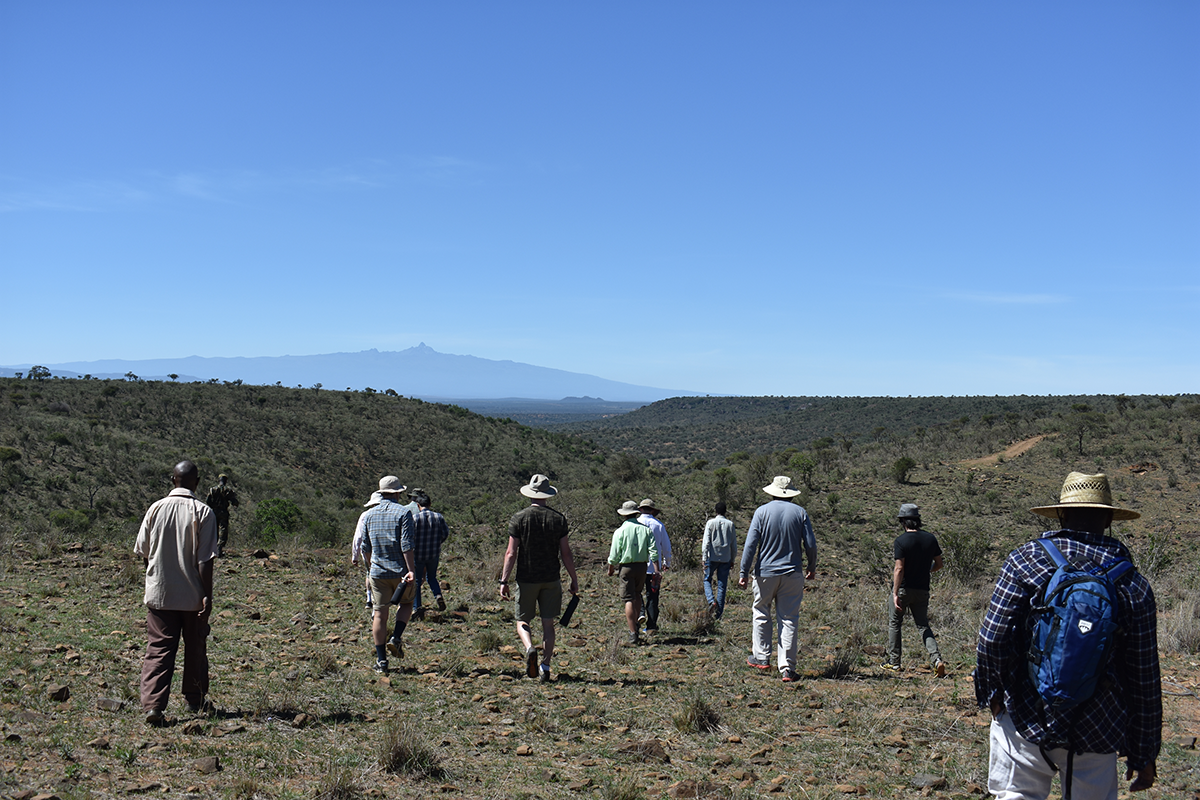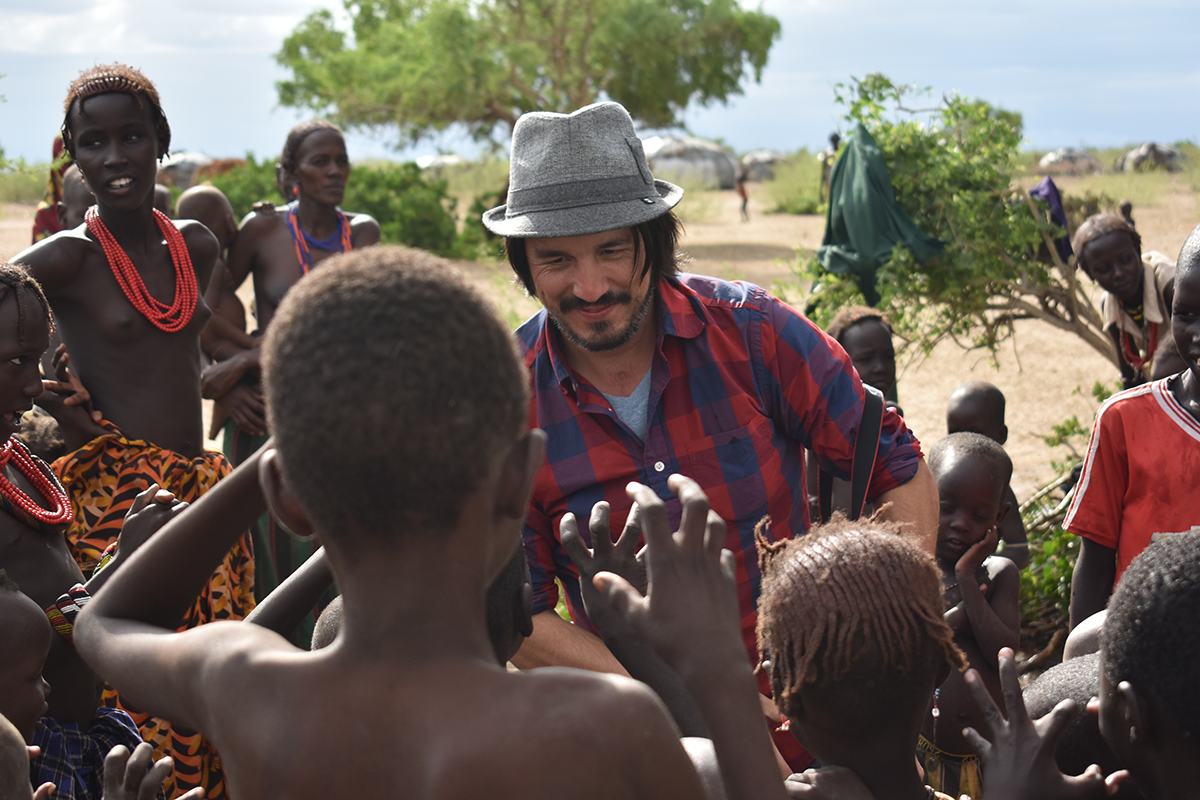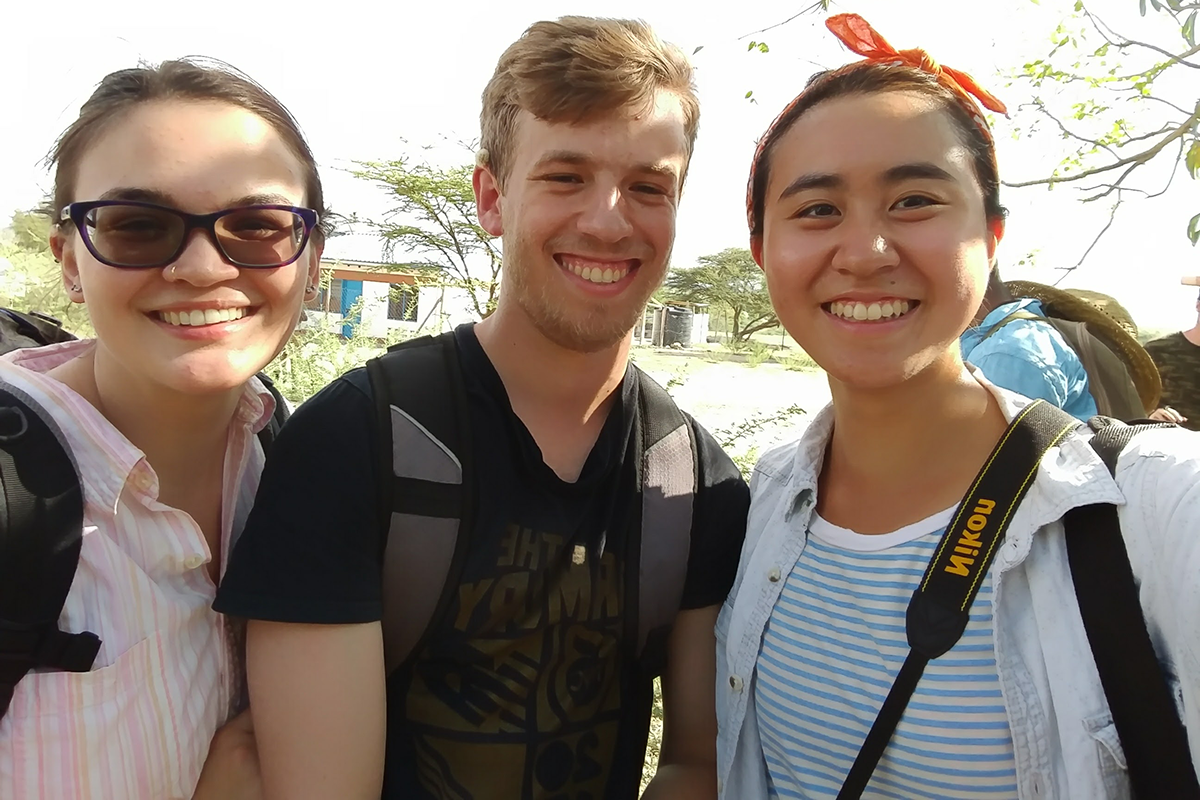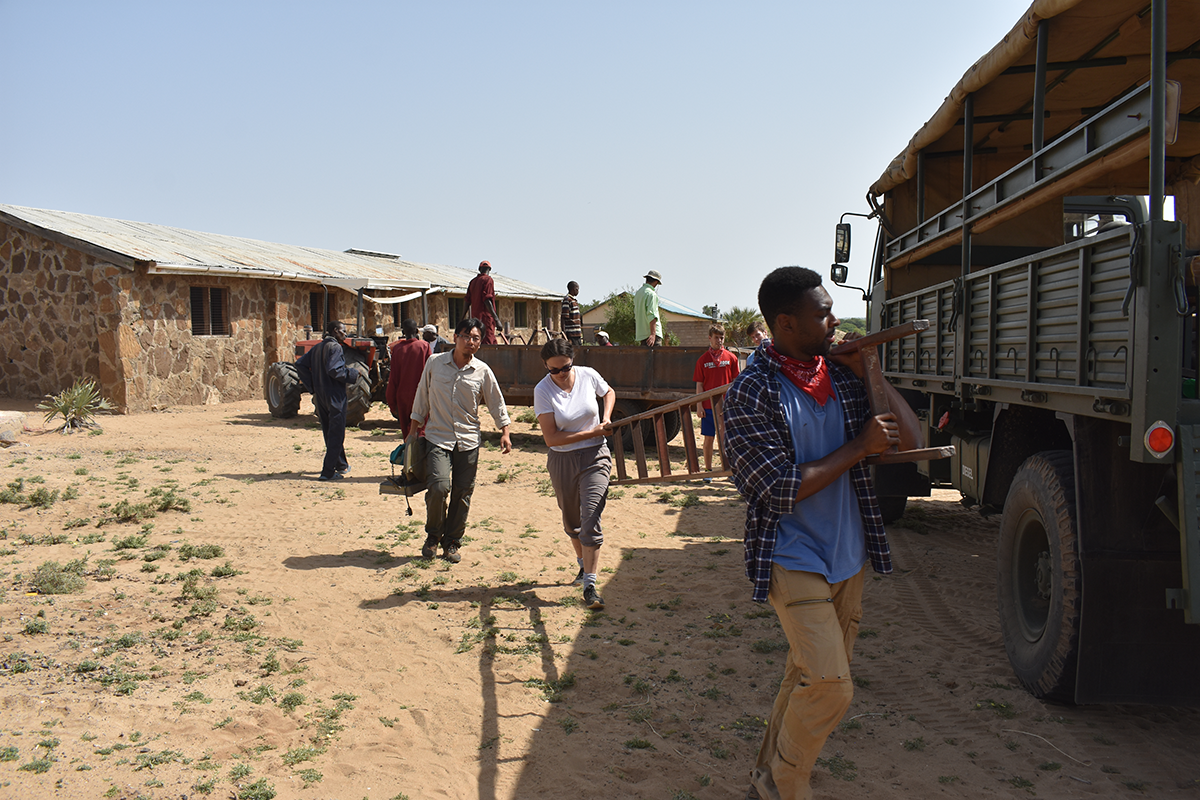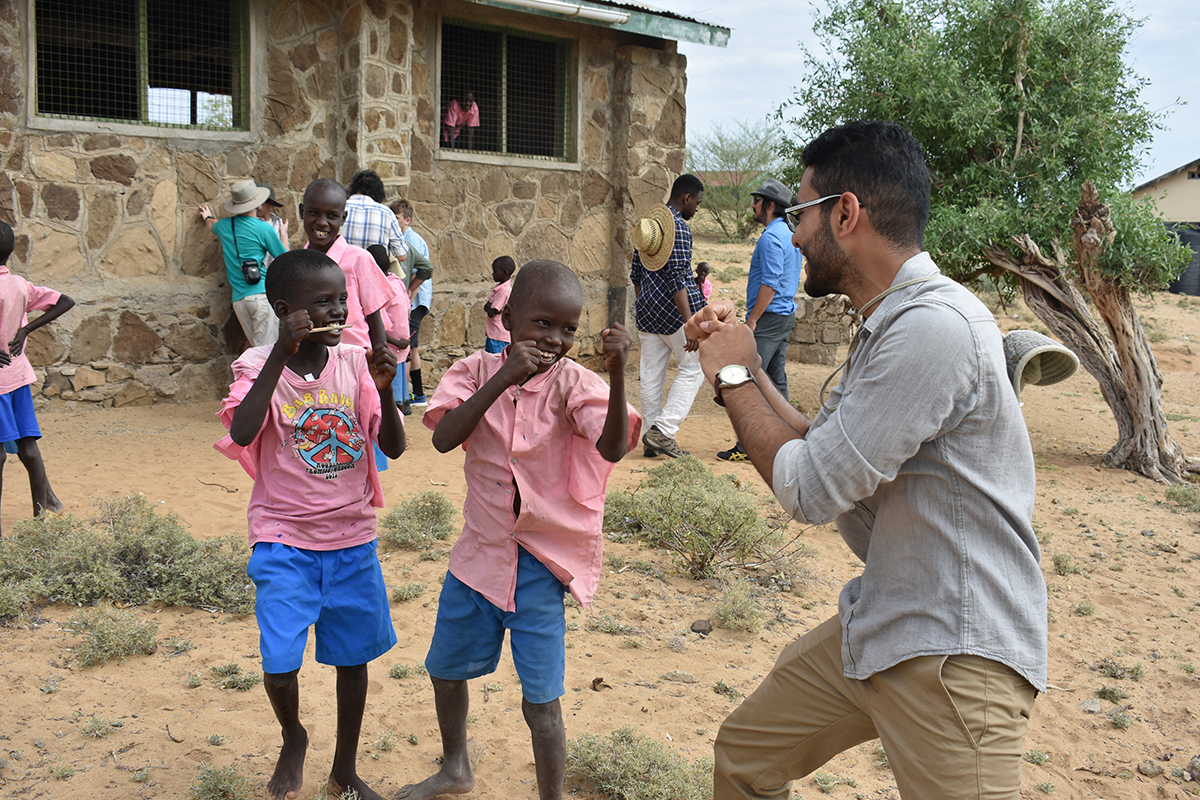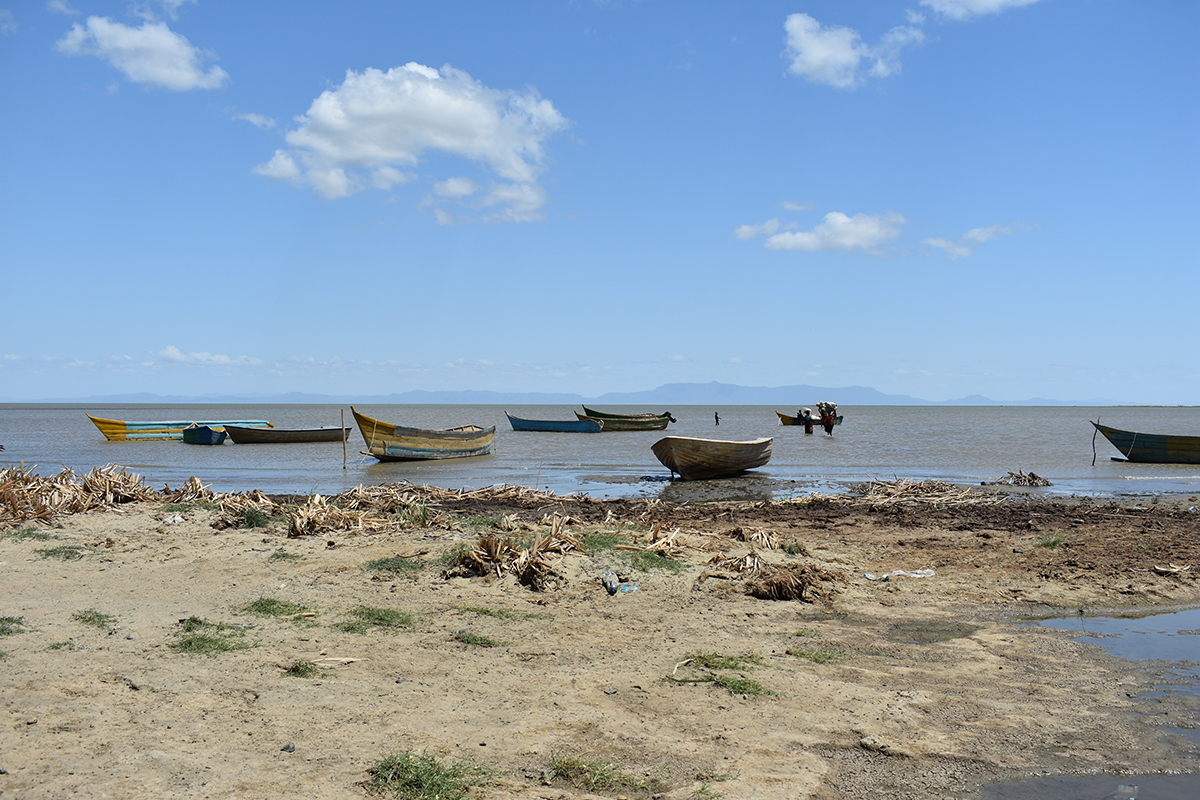Engineering for the Developing World 2017
Where Problems Meet Solutions
 My name is Julian Kingston, a proud graduate of Stony Brook University, Class of 2017.
This past summer I had the esteemed pleasure of being the teaching assistant to an
ingenious group of students on the first Global Innovation Study Abroad program. The
program was created by the College of Engineering and Applied Sciences and hosted
by the Turkana Basin Institute (TBI) in Northern Kenya. It aims to apply concepts
from STEM field classrooms to help solve some of the everyday challenges facing in
the developing world.
My name is Julian Kingston, a proud graduate of Stony Brook University, Class of 2017.
This past summer I had the esteemed pleasure of being the teaching assistant to an
ingenious group of students on the first Global Innovation Study Abroad program. The
program was created by the College of Engineering and Applied Sciences and hosted
by the Turkana Basin Institute (TBI) in Northern Kenya. It aims to apply concepts
from STEM field classrooms to help solve some of the everyday challenges facing in
the developing world.
Over the course of the summer, I assisted Professor Rodrigo Peña-Lang and the nine
Stony Brook students in developing 11 projects to provide effective and sustainable
solutions for the Dassanech community in Ileret, a town located near the TBI facility.
The community saw immediate benefit from many of the solutions. Because they worked
with us to define and solve the problems, they will continue to benefit long after
the program has ended. Following are highlights of six of the projects the group undertook
during our six weeks in Kenya.
Bone Charcoal FilterIn Ileret, the scarce water sources that are available to the Dassenech community are contaminated with high levels of fluoride, a chemical compound rich in the northern Kenyan region. Cheng-Wen Hsu, a biochemistry and philosophy major, and Jacob Marlin, a senior and civil engineering major, saw the massive need for improvement in drinking water for the residents of Ileret and took the task head-on. After researching different methods of water filtration, the team determined that the best method for filtering the high concentration of fluoride from water was using a bone charcoal, a product that arises from fresh bones being burned. Research has shown bone charcoal to be effective in reduction of fluoride levels and bones are readily available in the open environment. Additionally, Professor Rodrigo emphasized the importance of providing sustainable solutions that could be replicated by the community after the students left, so the bone charcoal filter was the perfect choice for implementation. After thoroughly burning the bones and producing their charcoal material, the group tested their filter in water revealing that, using the filter, the fluoride levels had, in fact decreased. T he water that the team used originally had a measure of 7.7parts-per-million (ppm) of fluoride content and, after the testing, the fluoride content had decreased to 5.7 ppm. To compare, in New York City, the acceptable amount is 4.0 ppm. The team still has a lot of testing to conduct to discover how to further decrease the fluoride content and to make an efficient system that the Dassanech people can manage on their own. Motivated and excited at their progress, the team plans to conduct more testing in the States and to finalize their implementation for everyday use in the Dassanech community. |
|
||||||
Wastewater Management SystemIn Ileret town, there is a medical clinic facing many challenges. One of these challenges is the wastewater management in the maternity clinic. In this facility, a small bucket was used in the sink and shower to capture wastewater which was then manually dumped outside of the facility. This left bio-waste outside of the clinic open to the environment where it could impact the soil, animals and even the other patients. Addison Shogren, a senior and mechanical engineer, and Joseph Kocaj, a senior and civil engineering major, teamed up to create a new wastewater system for the clinic. They used scrap materials from other facilities to replace piping on the clinic’s sink. Then, with materials and assistance from the TBI staff, constructed a septic tank system out of perforated oil drums and PVC piping. This system outputs waste from the maternity clinic and percolates the water underground- thus preventing waste from accumulating on the surface. Specially built to protect against weathering and other outside influences from the environment, the system is designed for long-term operation, and to be maintained by the community |
|
||||||
A New Design for the ClinicWhen Brent Freestone, a senior and mechanical engineering major, and Nick Bradica, a junior and engineering science major, arrived in Ileret, they researched and experimented with providing a new way to refrigerate and store vaccines in the hot, arid climate. Professor Rodrigo saw the potential impact of this short-term project, but understood that there would need to be a broader solution to making the clinic sustainable in the long-term. He presented the challenge of having the two students redesign the entire clinic to create the optimal layout for the facilities to maximize efficiency and effectiveness. The clinic is experiencing problems with bats, infrastructure and erosion, as well as wastewater issues. The team visited the clinic to inquire and research optimal storage options, room layouts for patients, sustainable electricity, and ease of movement between buildings for staff and patients. Nick and Brent designed a layout for the ward that would be cost-effective and provide a more efficient and stable structure for the patients and staff. Design-in-hand, the team is now reaching out to professionals for technical expertise to ensure the viability of their design, and identify possible funding opportunities with the Kenyan government and outside influencers. |
|
||||||
Repairing Solar PowerGiancarlos Llanos, a senior and mechanical engineering major, along with Keena Alyaro, a mechanical and power systems engineer at TBI, saw an opportunity to improve the solar power systems at the school and clinic. The clinic and school originally received solar panel systems and batteries from NGOs and charity organizations. However, these systems weren’t maintained over time and the batteries have mostly become obsolete. Keena and Giancarlos diagnosed the batteries and systems to identify the issues facing the systems. They discovered that the batteries had overheated in their casings and been blown beyond repair. Upset by the misfortune of the failed technology, they went to work. First, the pair reconfigured a fully operational solar power system in a laboratory room for the school, restoring lighting and power to a room where students could study using computers, a rare commodity and much-needed asset to the students’ education and the school. In one case, Beatrice, the head nurse at the clinic, lived in a staff home without power. Solar panels were never installed on her building, so she would lose all ability to operate in her home at night. With the help of Mwang’ombe, the head mechanic at TBI, the team of researchers were able to bypass electricity from another staff building that had solar energy, to power Beatrice’s home. The group then pushed to impact one final area, the maternity clinic. The nurses didn’t have a light source once night fell, meaning that after sunset, they delivering babies by flashlight. The students could see that this was unacceptable and wanted to help. Giancarlos and Keena negotiated between the clinic and school to offer an exchange. The pair borrowed a working device from one of the non-working solar panel systems in the school and placed it in the maternity clinic. With the support of community leaders and some configuration to the system, they were able to restore power to the maternity clinic. |
|
||||||
Remodeling the ClassroomIn Ileret town, a singular school was the center of learning for all children within a 40km radius. The main building held five different classrooms for the students. When the Global Innovation Team arrived, they noticed instantly that the school’s structure was not sound and the facade was failing. Upon further inspection, they determined that three of the five classrooms were not viable for use and could collapse at any moment. Saffron Livaccari, a third-year senior and applied mathematics and statistics major, collaborated with Alan Guo, a senior and civil engineering major, to create a plan to develop a safer learning environment for the students. Their idea was to rehabilitate the unused boys dormitory building and establish three classrooms inside. With support and materials from the TBI staff, the team designed and built a 8-ft tall wall divider in the center of the dormitory and repainted the interior of the building. The divider constructed as a physical barrier to split the classrooms. They optimized the material as a sound barrier between the classes to minimize disruptions from classes running simultaneously. The team also cleverly used green paint on the walls as a chalkboard for the teachers and students. This meant that with just a bit of paint, the chalkboard could be expanded to any size needed for the classroom and the chalk easily removed. Now the students have classes in the dormitory where there is more space and less risk, while the original school building is being rebuilt. Saffron and Alan also plan to write to the Kenyan government to obtain assistance for additional rehabilitation of the school grounds. |
|
||||||
An Unprecedented FloodDuring their trip, the global innovators experienced a historic nine hours of rainfall with a record high of 200mm (8 inches), unprecedented in this part of Kenya. While the great amount of rainfall can offer fresh water to the community, it is a double-edged sword. The nearby river channels flood quickly whenever there is a heavy rainfall, eroding land and breaking-down roads and access to the town. The flood dealt destructive damage - farmers lost their cattle, their main source of food and currency, families lost homes, and 30 people were swept away in the raging waters. Local tribes had lost everything. The Turkana Basin Institute decided to gather funds to buy and distribute food and housing supplies for the impacted communities. Together, TBI and the global innovators raised about $2,000 to distribute utensils, sugar, grains, bowls, metal sheets for building homes, cooking materials, and more to those affected. The quick response provided a feeling of hope in the face of tragedy. The burning desire to be of service led the students to make a big difference on the Dassanech community over the five-weeks they spent in Kenya. Although their time in Ileret has ended, the students’ impact will long outlive the time they spent in Kenya. |
|
||||||

About the Author:

|
Julian Kingston attended the 2017 Global Engineering Field School as a teaching assistant. He graduated from Stony Brook University's College of Engineering and Applied Sciences in May, 2017, with a BS degree in electrical engineering. While at Stony Brook, Julian co-founded CentriSeed Innovations, which provides sustainable solutions for developing communities both locally and internationally. He is interested in sustainability and understanding the intersection between nature and technology to help make an impact in the world. |

|
*Photography by Wen Hsu |






















